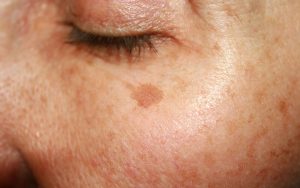Key Pointers at a Glance:
- Foot calluses form as a natural response to pressure and friction.
- Some home remedies can help soften thickened skin, but not all are safe or effective.
- Over-filing and harsh chemicals can make calluses worse or cause infection.
- A dermatologist can help treat persistent or painful calluses safely.
- Dr Joyce Lim and her team can guide you on proper care and treatment options.
Why Foot Calluses Form in the First Place
Foot calluses are your skin’s natural defence. They usually form on the heels, balls of the feet, or toes, areas that bear repeated friction or pressure.
Most of the time, they’re harmless. But when calluses become thick, cracked, or painful, even a short walk can feel uncomfortable. That’s when people often start trying home fixes, or whatever foot file they can find.
What Actually Works at Home
If your calluses are mild, consistent care can make a difference. Here’s what dermatologists generally consider safe:
- Soak and soften: Soak feet in warm (not hot) water for 10–15 minutes to loosen dead skin. A pinch of mild soap or Epsom salt helps.
- Use a pumice stone gently: After soaking, rub gently in circular motions, never forcefully.
- Moisturise daily: Apply a rich foot cream with urea, salicylic acid, or lactic acid to soften skin and prevent buildup.
- Check your shoes: Poorly fitted footwear causes friction that undoes your progress.
Consistency is key, the goal is gradual softening, not complete removal in one session.
What Doesn’t Work (and Might Make Things Worse)
Some viral remedies can actually damage the skin. Here’s what to avoid:
- Over-filing or cutting: Blades and razors can cut too deep, leading to infection.
- Acidic or medicated pads: Over-the-counter acids can irritate or burn surrounding skin.
- Dry scraping: Filing without soaking can cause micro-tears.
- Ignoring pain: Persistent pain or redness may signal infection or another condition.
Gentle care beats aggressive treatment every time.
When It’s Time to See a Dermatologist
If your calluses are thick, cracked, or keep returning, it’s time to see a dermatologist. What seems like a callus could be something else, like a corn, wart, or friction-related lesion.
Dr Joyce Lim and her team often see patients who’ve tried self-removal methods with little success. In clinic, they may perform safe debridement (removal of thickened skin), prescribe medicated creams, or discuss preventive care.
People with diabetes or poor circulation should never attempt to cut or shave calluses on their own, as even small wounds can become serious.
How to Keep Calluses from Coming Back
Healthy feet need regular care. Try these simple habits:
- Moisturise every night.
- Choose supportive, cushioned shoes.
- Wear socks that reduce friction.
- Avoid walking barefoot for long periods.
Small changes go a long way in keeping your feet smooth and comfortable.
Frequently Asked Questions
- Can I permanently remove calluses at home?
No. Calluses can be managed but not permanently eliminated, as they often return if friction or pressure continues. Home care helps keep them soft, but professional treatment may be needed for thick or recurring ones. - Are calluses and corns the same thing?
Not exactly. Calluses are broader, flat areas of thickened skin, while corns are smaller, circular, and may feel more painful because they press deeper into the skin. A dermatologist can help tell the difference. - Is it safe to use a razor or blade to remove calluses?
No. Cutting or shaving calluses can cause wounds or infections, especially if you have diabetes or sensitive skin. Always leave sharp tools to medical professionals. - How often should I use a pumice stone?
Once or twice a week is usually enough. Overuse can irritate the skin or cause bleeding. Always soak your feet before using it, and follow up with moisturiser. - When should I see a dermatologist for foot calluses?
If your calluses are painful, cracked, or don’t improve after home care, or if you notice swelling, redness, or bleeding, it’s best to book a consultation. Persistent or painful calluses may require professional assessment and treatment.
Need Help with Stubborn Calluses?
At Joyce Lim Skin and Laser Clinic, Dr Joyce Lim and her team provide personalised care for various skin conditions, including foot calluses and thickened skin. They can help identify what’s causing your calluses and guide you through safe and effective treatment options.
You can have healthy and comfortable feet. Book a consultation with Joyce Lim Skin and Laser Clinic today.











